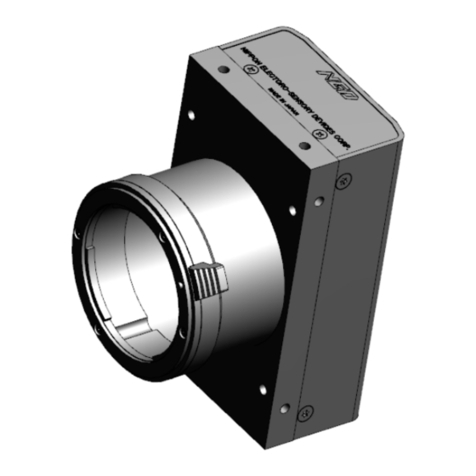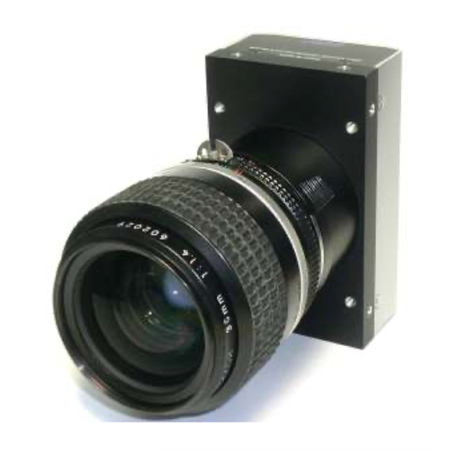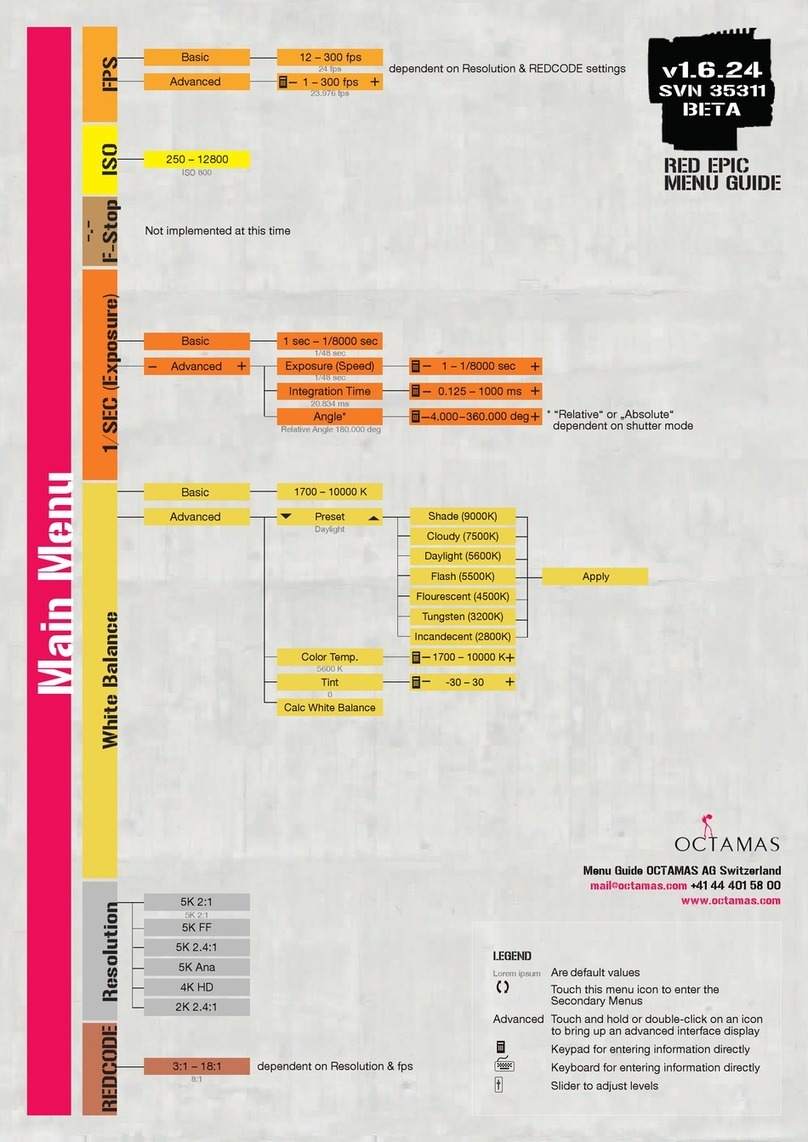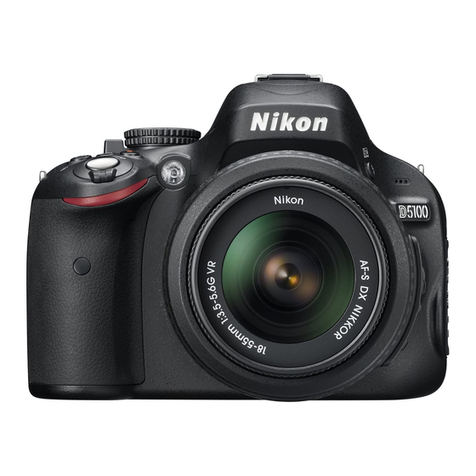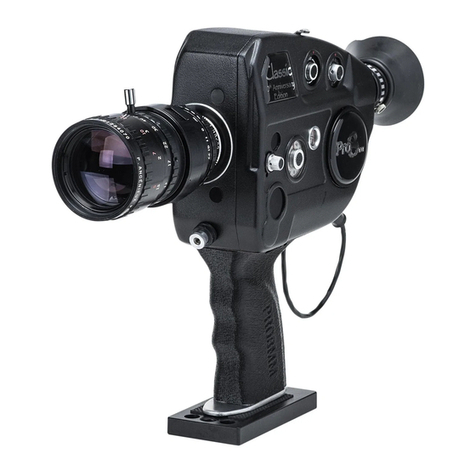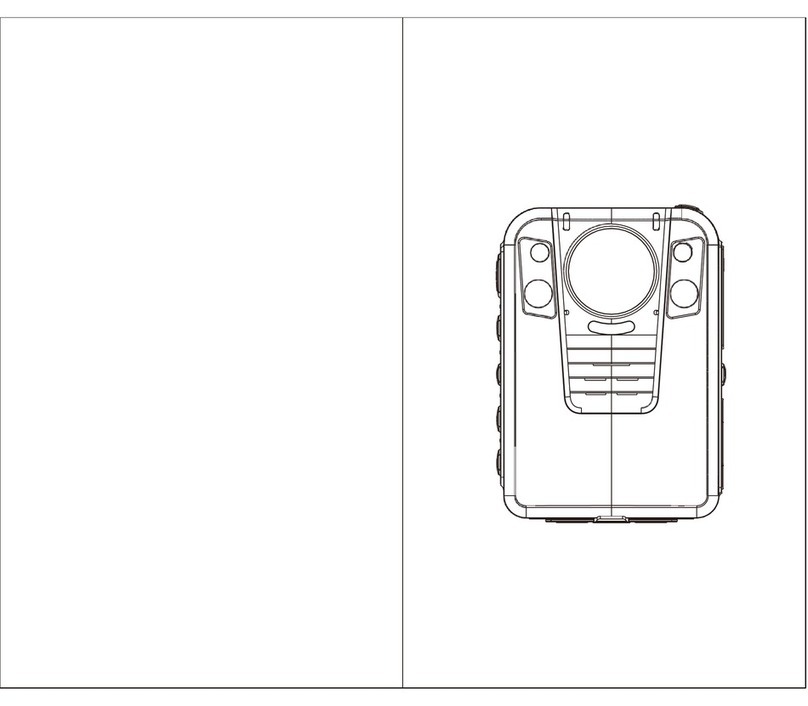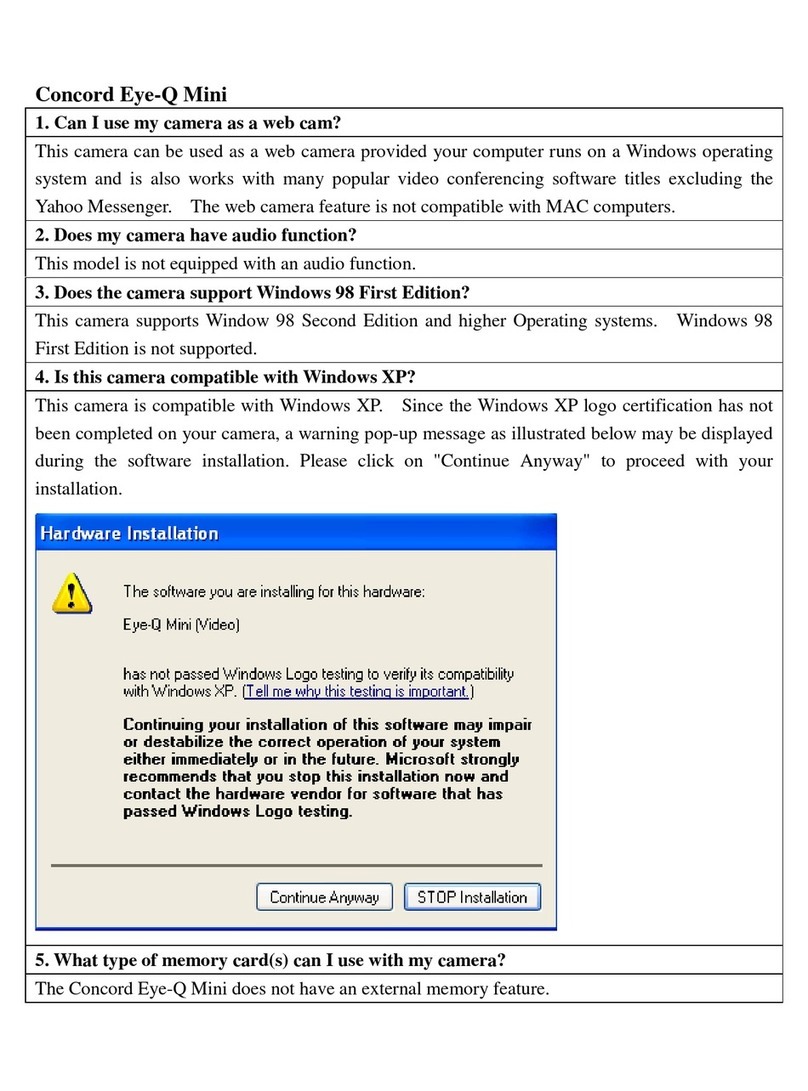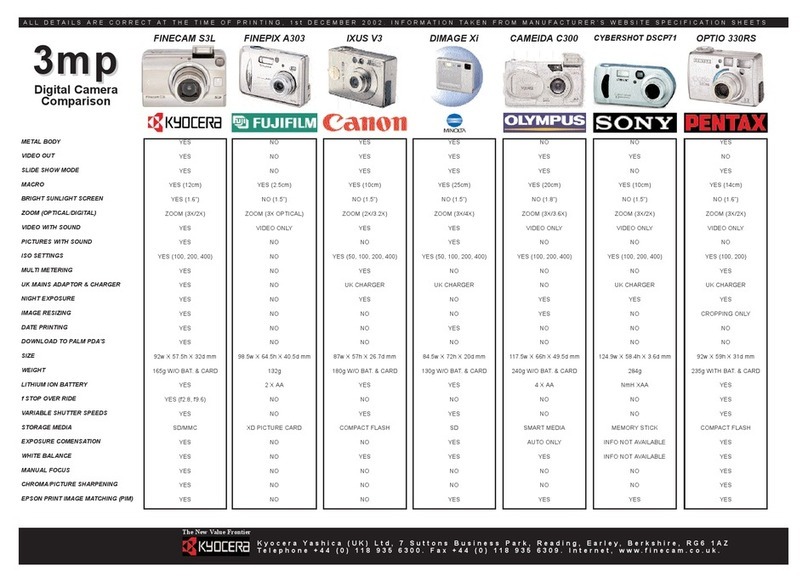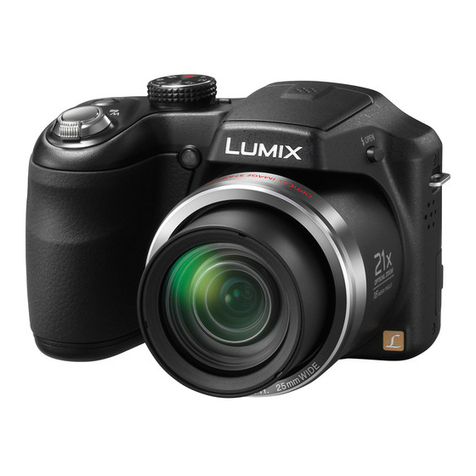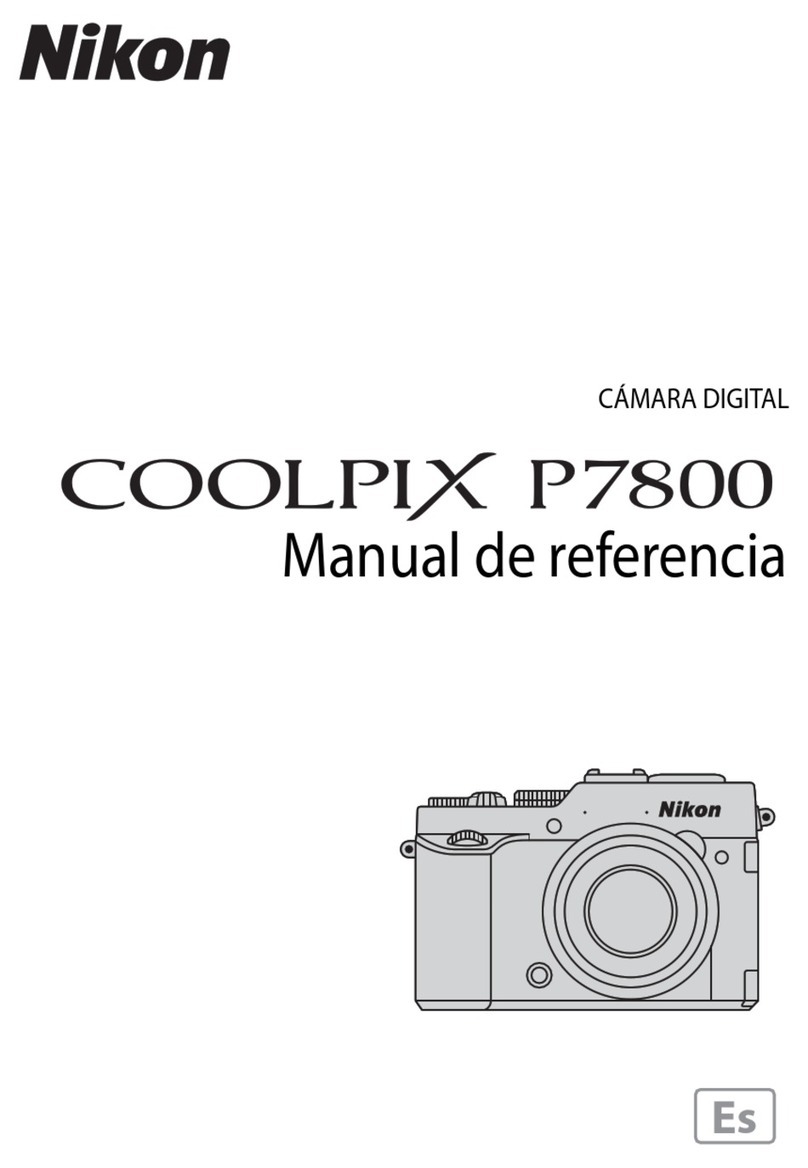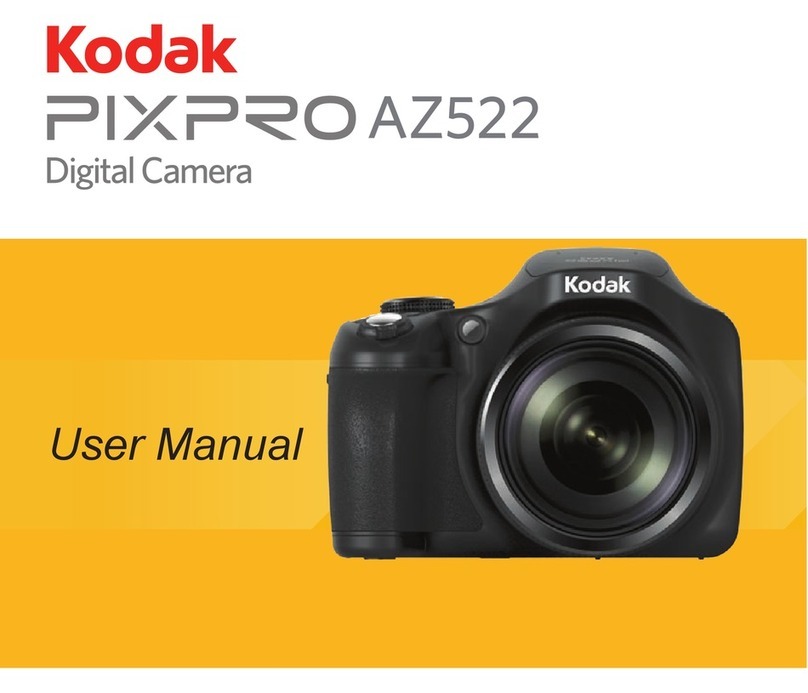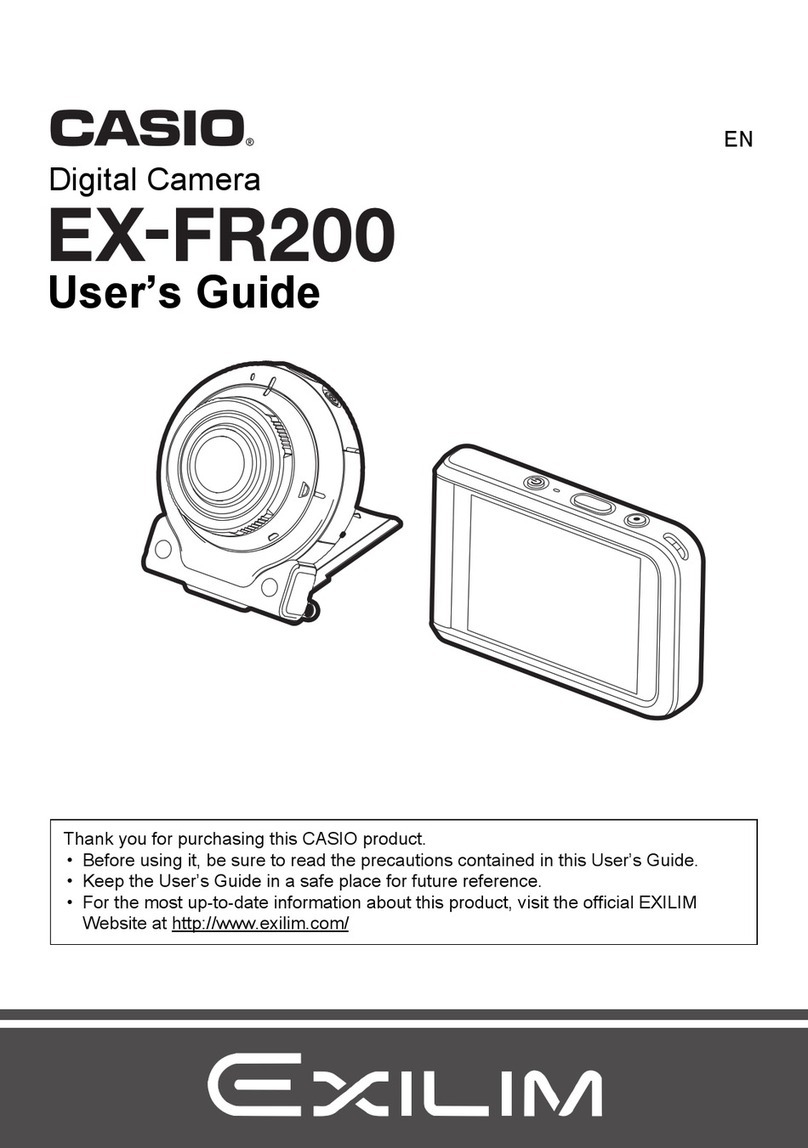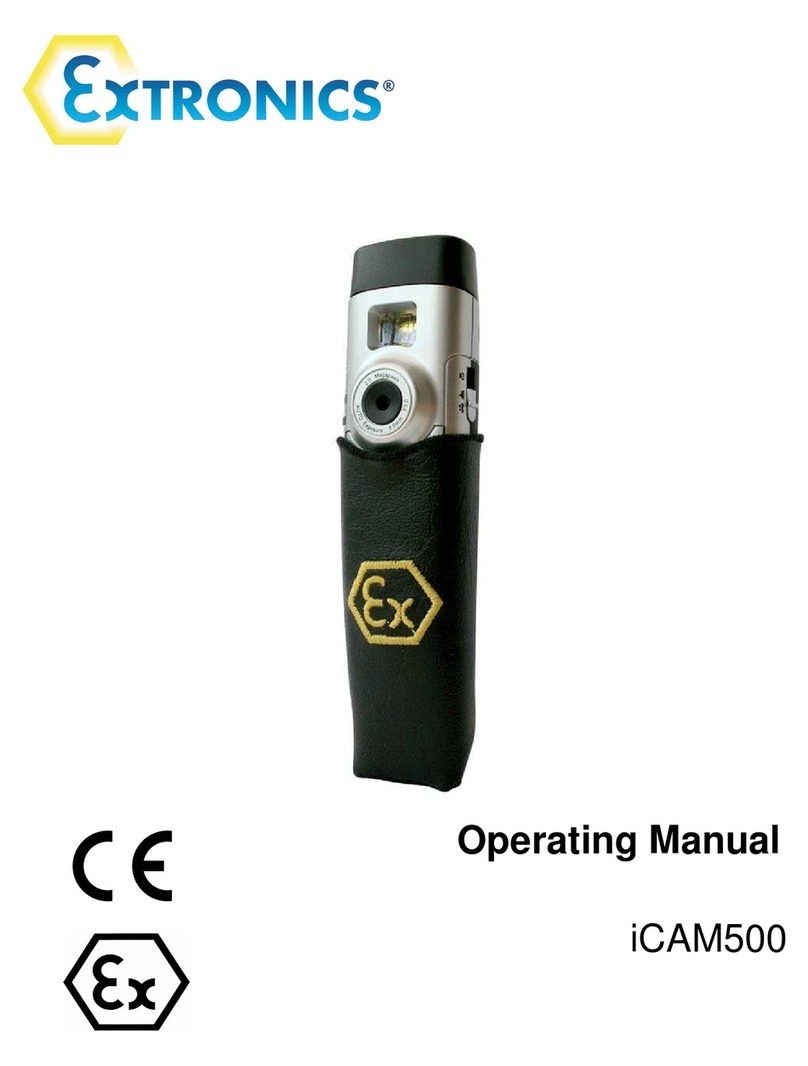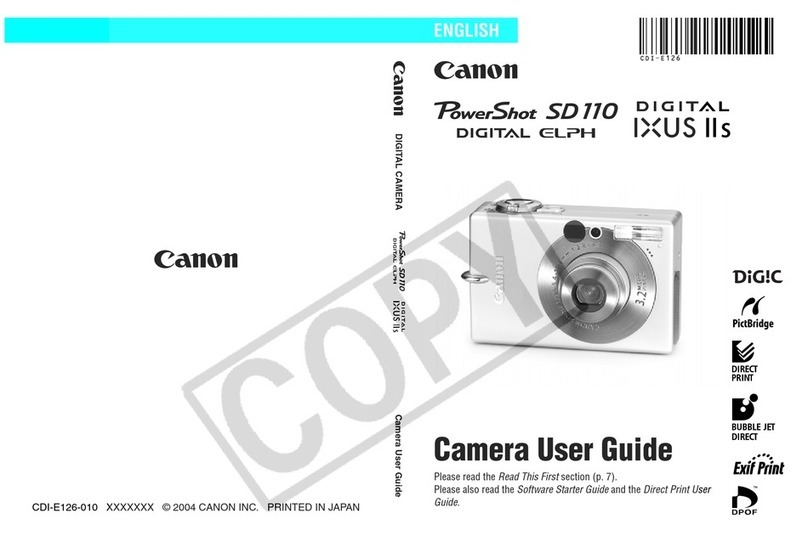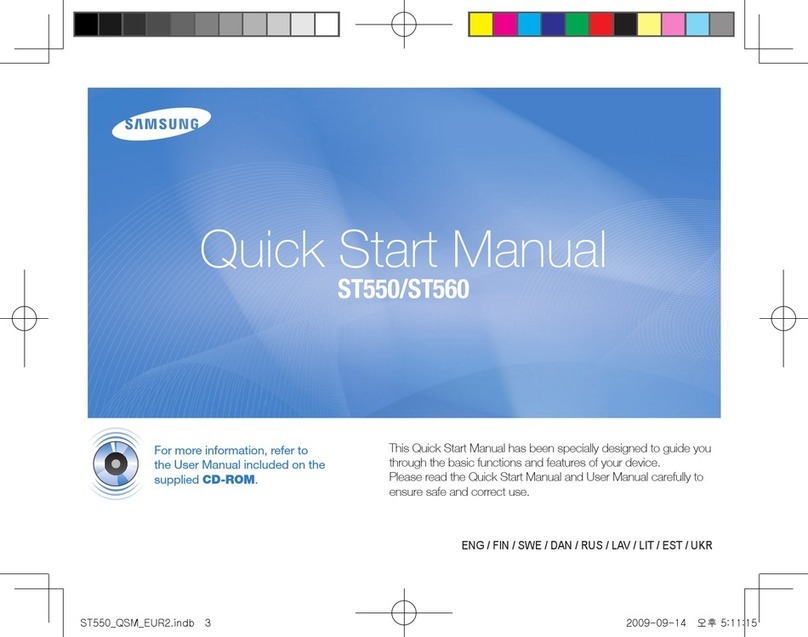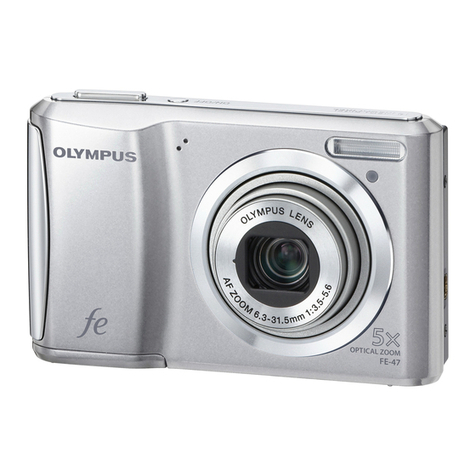NED XCM2080SAT4 User manual

User’s Manual
Line Scan Camera
Type: XCM2080SAT4/XCM2040SAT4
NIPPON ELECTRO-SENSORY DEVICES CORPORATION

2 NED
XCM2080SAT4/XCM2040SAT4 UME-0006-04
For Customers in the U.S.A.
This equipment has been tested and found to comply with the limits for a Class A
digital device, in accordance with Part 15 of the FCC Rules. These limits are designed
to provide reasonable protection against harmful interference when the equipment is
operated in a commercial environment. This equipment generates, uses, and can
radiate radio frequency energy and, if not installed and used in accordance with the
instruction manual, may cause harmful interference to radio communications. Operation
of this equipment in a residential area is likely to cause harmful interference, in which
case the user will be required to correct the interference at his or her own expense.
For Customers in the EU
This equipment has been tested and found to comply with the essential requirements
of the EMC Directive 2004/108/EC, based on the following specifications applied:
EU Harmonised Standards
EN55011:2009+A1:2010 Group1 Class A
EN61000-6-2:2005
*Group 1 contains all ISM (Industrial, Scientific and medical) equipment in which there
is intentionally generated and/or used conductively coupled radio-frequency energy
which is necessary for the internal functioning of the Equipment itself.
*Class A equipment is equipment suitable for use in all establishments other than
domestic and those directly connected to a low voltage power supply network which
supplies buildings used for domestic purposes.
Directive on Waste Electrical and Electronic Equipment (WEEE)
Please return all End of Life NED products to the distributor from whom the product was
purchased for adequate recycling and / or disposal. All costs of returning the Product to
NED are borne by the shipper.

3 NED
XCM2080SAT4/XCM2040SAT4 UME-0006-04
Introduction
Thank you for purchasing NED’s Line Scan Camera. We look forward to your
continued custom in the future.
For safety use
For your protection, please read these safety instructions completely before
operating the product and keep this manual for future reference.
The following symbols appear next to important information regarding safe product
handling.
Warning
If the product is not handled properly, this may
result in serious injury or possible death.
Caution
If the product is not handled properly, this may
result in physical injury or cause property damage.
Safety precaution
Warning
Never disassemble or modify this product, unless otherwise specified to do so in
this manual.
When hands are wet, avoid handling this product and do not touch any of the
connection cable pins or other metallic components.
Do not operate this product in an environment that is exposed to rain or other
severe external elements, hazardous gases or chemicals.
If the product is not to be used for an extended period of time, as a safety
precaution, always unplug the connection cable from the camera unit.
If the product installation or inspection must be executed in an overhead location,
please take the necessary measures to prevent the camera unit and its components
from accidentally falling to the ground.
If smoke, an abnormal odor or strange noise is emitted from the camera unit, first
turn OFF power, then unplug the cable from the camera unit.
This product is not intended for use in a system configuration built for critical
applications.

4 NED
XCM2080SAT4/XCM2040SAT4 UME-0006-04
Instructions before use
Only operate this product within the recommended environmental temperature
range.
Use only the specified power source and voltage rating.
Do not drop this product. Avoid exposure to strong impact and vibrations.
Install the camera unit in a well-ventilated environment, in order to prevent the
camera from overheating.
If the camera must be installed in an environment containing dust or other particles,
take required measures to protect the camera unit from dust adhesion.
Do not unplug the cable while power is being supplied to the camera unit. To
prevent product damage, always shut down the power supply before unplugging the
power cable.
When the surface of the camera window becomes dirty due to dust or grime, black
smudges appear in the displayed image. Use an air blower to remove the dust
particles. Dip a cotton swab into ethanol alcohol and clean the camera window. Be
careful not to scratch the glass.
Use of non-infrared lighting such as a fluorescent lamp is recommended. If halogen
lighting is employed, always install an infrared filter into your system configuration.
Please note that exposure to long wavelength light outside of the sensors visible
optical range can affect the image.
Sensitivity may fluctuate depending on the spectral response level of the light
source. In cases like this, changing the light source to one with a different spectral
response level may reduce this problem.
For stabilized image capturing, turn ON the power supply and execute aging for ten
to twenty minutes before actually using the camera unit.
Do not share the power supply with motor units or other devices that generate noise
interference.
The signal ground (SG) and the frame ground (FG) are connected inside the
camera unit. Design the system configuration so that a loop will not be formed by
the ground potential differential.
Do not disconnect the camera while rewriting an embedded memory.
When you change exposure mode that is set at NED factory, input control signal
(CC1) from the capture board.

5 NED
XCM2080SAT4/XCM2040SAT4 UME-0006-04
Exclusion Clause
The manufacturer assumes no responsibility for damages resulting from natural
disasters, earthquakes, or acts executed by a third party. Warranty excludes any
accidents resulting from improper handling or misuse of this product, whether
intentional or not, and any camera operations conducted under abnormal
conditions.
The manufacturer assumes no responsibility for any incidental damages (loss of
corporate profits, interruption of business, etc.) resulting form use or non-use of this
product.
The manufacturer assumes no responsibility for damages resulting from failure to
follow the instructions and procedures indicated in this User’s Manual.
The manufacturer assumes no responsibility for any damages resulting from
malfunctions caused by combined use of this product with other peripheral
equipment.
The manufacturer assumes no responsibility for damages resulting from
malfunctions caused by non-authorized repair or modifications made to this product.

6 NED
XCM2080SAT4/XCM2040SAT4 UME-0006-04
Table of Contents
1 Product Outline.........................................................................................9
1.1 Features(XCM2080SAT4/XCM2040SAT4)......................................................................9
1.2 Application............................................................................................................................9
1.3 Image Sensor......................................................................................................................10
1.4 Performance Specifications..............................................................................................12
2 Camera Setting and Optical Interface.......................................14
2.1 Setting the Camera.............................................................................................................14
2.2 Fixing the Camera..............................................................................................................14
2.3 Optical Interface.................................................................................................................17
3 Hardware.....................................................................................................18
3.1 Camera Connection ...........................................................................................................18
3.2 Input / Output Connectors and Indicator.........................................................................20
3.3 Connectors・Pin Assignments・Cables.............................................................................21
3.4 Power Supply......................................................................................................................24
4 Camera Control.......................................................................................25
4.1 Flow of Camera Control.....................................................................................................25
4.1.1 Command Overview....................................................................................................25
4.1.2 Camera Receiving Message (PC Sending Command) ............................................25
4.1.3 Camera Sending Message (PC Receiving Message)...............................................26
4.1.4 Camera Control Commands.......................................................................................27
4.1.5 Memory Setup Values (Factory Settings) .................................................................28
4.2 Details on Commands........................................................................................................28
4.2.1 Setting Analog Gain ....................................................................................................28
4.2.2 Setting Digital Gain......................................................................................................29
4.2.3 Setting Digital Offset...................................................................................................29
4.2.4 Setting Exposure Mode...............................................................................................29
4.2.5 Setting Exposure Time................................................................................................30
4.2.6 Setting Output Signals (Setting Data Format)..........................................................30
4.2.7 Setting the Pixel Readout Direction ..........................................................................30
4.2.8 Saving Pixel Correction Data .....................................................................................31
4.2.9 Setting Pixel Correction..............................................................................................31
4.2.10 Generating Test Pattern............................................................................................31

7 NED
XCM2080SAT4/XCM2040SAT4 UME-0006-04
4.2.11 Memory Initializing (Initializing Camera Settings) .................................................32
4.2.12 Memory Load .............................................................................................................33
4.2.13 Memory Save..............................................................................................................33
4.2.14 Returning the Camera Settings to the its original status......................................34
4.3 Internal Circuit Configuration Block................................................................................35
4.4 Digital Processing flow in FPGA ......................................................................................36
4.5 Startup.................................................................................................................................36
4.6 Saving and Loading Camera Settings.............................................................................37
4.7 Serial Communication Settings........................................................................................38
4.8 Video Output Format..........................................................................................................38
4.9 Exposure Mode and Timing Chart....................................................................................41
4.9.1 Free Run Exposure Mode (Programming time setting)...........................................41
4.9.2 External Trigger Exposure Mode (External trigger edge)....................................42
4.9.3 External Trigger Exposure Mode (Trigger Level).....................................................43
4.10 Setting Offset....................................................................................................................44
4.11 Setting Gain ......................................................................................................................45
4.12 Pixel Correction................................................................................................................46
4.12.1 How to calibrate the camera.....................................................................................47
4.13 Test Pattern.......................................................................................................................48
5 Confirming Camera Settings..........................................................52
5.1 Before Power-on.................................................................................................................52
5.2 After Power-on....................................................................................................................53
5.3 In Operation ........................................................................................................................55
6 Sensor Handling Instructions........................................................56
6.1 Electrostatic Discharge and the Sensor..........................................................................56
6.2 Protecting Against Dust, Oil and Scratches....................................................................56
6.3 Cleaning the Sensor Window............................................................................................56
7Troubleshooting.....................................................................................57
7.1 When there is no Image.....................................................................................................57
7.2 When Noise is present in the Image ................................................................................59
7.3 When the Camera becomes hot .......................................................................................61
8 CLISBeeCtrl...............................................................................................62
8.1 Overview..............................................................................................................................62
8.2 System Requirements........................................................................................................62

8 NED
XCM2080SAT4/XCM2040SAT4 UME-0006-04
8.3 Install ...................................................................................................................................62
8.4 Uninstall ..............................................................................................................................62
8.5 Operation.............................................................................................................................63
8.5.1 Start Program...............................................................................................................63
8.5.2 Selecting interface and Timeout setting...................................................................64
8.5.3.Connect.........................................................................................................................67
8.5.4.Disconnect and end program.....................................................................................68
8.5.5.Check of the contents of communication.................................................................68
8.5.6.Export Parameters to text file ....................................................................................69
8.5.7.Import Parameters from text file................................................................................69
8.6 Control.................................................................................................................................70
8.6.1 Gains and Offsets........................................................................................................70
8.6.2 Clock & Integration......................................................................................................71
8.6.3 Exposure mode (Trigger Mode) & Video output mode............................................72
8.6.4 Intelligence...................................................................................................................73
8.6.5 Memory in camera.......................................................................................................73
8.7 Upgrade...............................................................................................................................74
8.8 How to Program..................................................................................................................74
8.9 Attention on use.................................................................................................................74
9 Others...........................................................................................................75
9.1 Notice...................................................................................................................................75
9.2 Contact for support............................................................................................................75
9.3 Product Support.................................................................................................................76
Revision History............................................................................................77

9 NED
XCM2080SAT4/XCM2040SAT4 UME-0006-04
1 Product Outline
1.1 Features(XCM2080SAT4/XCM2040SAT4)
High speed readout 320MHz:XCM2080SAT4 / 160MHz:XCM2040SAT4
Easy control of gain / offset / video output (8/10bit) with software outside the
camera.
Easy connection with a variety of frame grabber boards via Camera Link
interface
Single power source DC12V to 15 for operation
It can correct the difference between bits and shading.
1.2 Application
Inspection of Transparent panels and PCBs
Visual inspection of high speed moving objects
Flat panel display inspection
Inspection of glass and sheet-like objects
Printed circuit board inspection
This camera utilizes an Intelligent Transportation System
Outdoor surveillance
An example of Visual Inspection is shown below.
Figure 1-2-1 Visual Inspection of PCBs
Line scan Camera
Object of inspection
■Example of using of one camera.
(Inspection of only surface)
■Example of using of three cameras.
(Inspection of surface and roller end face)

10 NED
XCM2080SAT4/XCM2040SAT4 UME-0006-04
Object of inspection (example)
Metallic part of cylinder and conical geometry (surface and roller end face)
・Automobile component ・Architectural reinforcement parts
・Various pin parts
Typical detection item
・chip ・dent ・scratch ・chip of roller end face ・external dimensions
Device specification
1. Camera: Line scan camera of number of 2048 pixels
2. Controller: Dedicated software for PC system
1.3 Image Sensor
The camera adopts a CMOS sensor with the maximum data rate of 320MHz
(XCM2080SAT4)/ 160MHZ(XCM2040SAT4)to acquire high quality images and
highly sensitive.
Both of the pixel sizes are 14μmx14μm.
XCM2080SAT4 outputs its 2048 pixel data through 80MHz-4Tap or *80MHz-2Tap and
1024pixel data through 80MHz-2Tap.
XCM2040SAT4 outputs its 2048 pixel data through 40MHz-4Tap or *40MHz-2Tap and
1024 pixel data through 40MHz-2Tap.
The block diagram of the image sensor is shown below.
Note:
The maximum data rate becomes 1/2 at 4tap, when it output the data of 2048
pixels in 2tap.
Block Diagram of Image Sensor is shown below.

11 NED
XCM2080SAT4/XCM2040SAT4 UME-0006-04
Figure 1-3-1 Block Diagram of Image Sensor
SPI(settings)
DC Voltage
Sequencer Clock,
External trigger
OS1
(1-512) OS2
(513-1024) OS3
(1025-1536) OS4
(1537-2048)
PD
512pixels
CDS
PGA
A
D
C
A
D
C
MUX
CDS
PGA
SPI
PD
512pixels
CDS
PGA
A
D
C
A
D
C
MUX
CDS
PGA
SPI
PD
512pixels
CDS
PGA
A
D
C
A
D
C
MUX
CDS
PGA
SPI
PD
512pixels
CDS
PGA
A
D
C
A
D
C
MUX
CDS
PGA
SPI
CLISBee CMOS Image Sensor

12 NED
XCM2080SAT4/XCM2040SAT4 UME-0006-04
1.4 Performance Specifications
The Performance Specifications are shown in Table 1-4-1. It shows the data when
the camera is operating at maximum scan rate, unless otherwise specified.
Table 1-4-1 Performance Specifications
Items
Specifications
XCM2080SAT4
XCM2040SAT4
Number of Pixels
2048 / 1024
Pixel Size H x V (μm)
14x14
Sensor Length (mm)
28.672(2K) / 14.336(1K)
Spectral Responsivity (nm)
400~1000 *Peak 625
DataRate (MHz)
2K: 4Tap
320
160
1K,2K: 2Tap
160
80
Scan Rate
(μs) / [kHz]
2K: 4Tap,
1K: 2Tap
8.0/[125.0]
16.0/[62.5]
2K: 2Tap
14.7/[68.0]
29.4/[34.0]
Saturation Exposure (lx・s) (typically)
[Minimum Gain, Pixel Correction Initial
Value, Daylight Fluorescent Light]
0.1*Visible Area (400~700nm)
Responsivity (V/ [lx・s]) (typically)
[Minimum Gain, Pixel Correction Initial
Value, Daylight Fluorescent Light]
50 *Visible Area (400~700nm)
*Analog 5V Conversion Sensitivity
Gain Adjustable Range
*Analog Amplifier +Digital
Analog Amplifier:x1 to x20 (7 Steps)
Digital :x1 to x2 (512 Steps)
Offset Adjustable Range
*Digital
-15 to 15 DN (31Steps): 8bit
-60 to 60 DN (31 Steps): 10bit
Video output
Camera Link
2K: 4Tap
Camera Link Medium Configuration
1K, 2K: 2Tap
Camera Link Base Configuration
Control Input
CC1: External Trigger Signal, CC2-4: Not in use
Connectors
Data/Controller
3M: MDR26 [Camera Link] x 2(CL1, CL2)
* Only CL1 can be used when used with 2tap.
Power Supply
Hirose: HR10A (4Pin)
Lens Mount
Nikon F Mount (2K, 1K) or C Mount (1K)
Operating Temperature (˚C)
No Condensation
0 to 40
Power Supply Voltage (V)
DC 12 to 15 [+/-5%]
Consumption Current (mA) (typically)
390
320
Size W x H x D (mm)
60x100x73.5(F Mount) / 60x100x44.5(C Moun)
Mass (g) (Camera only)
435 (F Moun) / 360 (C Moun)

13 NED
XCM2080SAT4/XCM2040SAT4 UME-0006-04
Additional Function
1 Shading Correction
2 Gain/Offset/Video Output Adjustable
3 Programmable Exposure Control
4 Scan Direction Switching
Note :
*1) DN : Digital Number (8bit : 0-255 / 10bit : 0-1023)
*2) Measurements were made at room temperature and daylight fluorescent light
The spectral responsivity is shown below.
相
対
感
度
(
%
)
20
40
60
80
100
Relative Responsivity(%)
400 500 600 700 800 900 1000
Wavelength (nm)
Figure 1-4-1 Spectral Responsivity

14 NED
XCM2080SAT4/XCM2040SAT4 UME-0006-04
2Camera Setting and Optical Interface
2.1 Setting the Camera
Use the M4 screw holes or the tripod screw hole to set the camera.
2.2 Fixing the Camera
Use the M4 screw holes (4 at the front, 8 at the side) to set the camera.
Or use the 1/4”-20UNC screw hole for a tripod (1 place at bottom).
If using the front panel M4 mounting holes (4 places at front, 8 places at side), the screw
length for fixing the camera should be less than 6mm.
No X-, Y-axis orientation and tilt adjustment mechanism is available. Please prepare
an adjustment mechanism if required.

15 NED
XCM2080SAT4/XCM2040SAT4 UME-0006-04
The dimensions of the camera are shown below.
Figure 2-2-1 Dimensions of the Camera (F Mount)
MADE IN JAPAN
NIPPON ELECTRO-SENSORY DEVICES CORP.
MADE IN JAPAN
NIPPON ELECTRO-SENSORY DEVICES CORP.
68
100
60
(73.5)
32
φ59
(1.7)
unit:mm
1-1/4"-20UNC DEEP 6
1st Pixel(2048)
4-M4 DEEP 6
(TOP,BOTTOM)
4-M4 DEEP 6
(BOTTOM)
(SIDE)
4-M4 DEEP 6
(FRONT)
40
5
74
18 64
indicator
5
40
50
Power Connector
CameraLink Connector
Nikon Fmont
(FB=46.5)
13
55
POWER
DC12-15V
CL1: DATA1
CTRL
DATA2CL2:
DIGITAL LINE SCAN CAMERA
CLISBee-S

16 NED
XCM2080SAT4/XCM2040SAT4 UME-0006-04
Figure 2-2-2 Dimensions of the Camera (C Mount)
MADE IN JAPAN
NIPPON ELECTRO-SENSORY DEVICES CORP.
MADE IN JAPAN
NIPPON ELECTRO-SENSORY DEVICES CORP.
39
100
60
(44.5)
3
φ59
unit:mm
1-1/4"-20UNC DEEP 6
4-M4 DEEP 6
(TOP,BOTTOM)
4-M4 DEEP 6
(BOTTOM)
(SIDE)
4-M4 DEEP 6
(FRONT)
40
5
74
18 64
indicator
5
40
50
Power Connector
CameraLink Connector
C mont
(FB=17.526)
13
55
POWER
DC12-15V
CL1: DATA1
CTRL
DATA2CL2:
DIGITAL LINE SCAN CAMERA
CLISBee-S
1st Pixel(1024)

17 NED
XCM2080SAT4/XCM2040SAT4 UME-0006-04
2.3 Optical Interface
The mount that installs the lens is different according to the model of the camera.
Nikon F mount is prepared as a standard issue, and when 1024 pixels are used,
C mount can be selected.
Notes:
1) Quantities of light and the wavelength etc. of a source of light necessary to take
the image for which the customer hopes are different according to the usage. The
factor to decide these contains physical properties, the speed, the spectrum
characteristic of the object taken a picture of, the exposure time, and the
characteristic of the source of light and the specification etc. of the taking system.
It is a luminous exposure (exposure time × quantities of light) that it is important
because an appropriate image is obtained. Please decide the exposure time and
quantities of light after examining which element the customer values enough.
2) Keep these guidelines in mind when setting up your light source:
LED light sources are relatively inexpensive, provide a uniform field and longer life
span compared to other light sources. However, they also require a camera with
excellent sensitivity.
Halogen light sources generally provide very little blue light but have high infrared
light (IR) proportions.
Fiber-optic light distribution systems generally transmit very little blue light relative
to IR.
Metal halide light sources are very bright but have a shorter life span compared to
other light sources.
3) Generally speaking, the brighter the light sources, the shorter the life span.
CMOS image sensors are sensitive to infrared (IR). We recommend using daylight
color fluorescent lamps that have low IR emissions. If you use a halogen light source,
to prevent infrared from distorting the images use an IR cutoff filter that does not
transmit wavelengths.

18 NED
XCM2080SAT4/XCM2040SAT4 UME-0006-04
3Hardware
3.1 Camera Connection
Use the camera in the following way:
①Camera Link cables must be used to connect the camera unit with the frame grabber
board.
Notes:
1)When it is used with 4Tap, the connection of the camera uses two cables for
Camera Link. Please use the cable of the same manufacturer and the same
length.
2)One cable for Camera Link is used when used with 2Tap.
Please connect it with the connector of CL1. (CL2 is unused.)
3)Use asymmetric Camera Link cables and connect the camera with the
connector labeled as ”Camera side”.
4)There are two connectors in for Medium Configuration of Camera Link, please
after confirming the specification of a frame grabber board and connect it.
②Connect the camera with the designated power supply.
Notes:
Use the designated power cable to connect the camera with the power source for
the camera. Insert the plug end of the cable into the camera. Attach the opposite
end (loose wires) to the power unit. Other than those above, a personal computer,
a frame grabber board, a compatible lens, a lens mount, a light source and an
encoder are necessary, depending on the situation.

19 NED
XCM2080SAT4/XCM2040SAT4 UME-0006-04
Figure 3-1-1 Connections between Camera and Frame Grabber Board and Power Supply
<Note: Choosing the appropriate Camera Link cable length >
According to the Camera Link Specification, the maximum cable length is 10m. But the
maximum cable length to be able to transfer data depends on the type of cable
performance and clock speed. The actual maximum transmission distance becomes
less than 10m at faster clock speeds, though the transmission distance of 10m is
feasible at slower clock speeds.
The following table shows values being calculated in accordance with the Camera Link
Specification 2007.Version1.2, using a typical cable (14B26-SZLB-xxx-0LC from 3M)
and frame grabber board (Solios from Matrox). Please choose the appropriate Camera
Link cable type and length for your application. We recommend you perform a
connection test in advance.
Table 3-1-1 calculated value of maximum cable length
Solios model
clock speed(MHz)
maximum cable length (m)
SOL 6M CL E*
(20~66MHz)
40
9.8
66
8.0
SOL 6M FC E*
(20~85MHz)
75
7.6
85
5.8
PC
Camera Link
Medium Configuration
Frame Grabber Board
Line Scan Camera
XCM2080SAT4 / XCM2040SAT4
Camera Link Cable
3M:14B26-SZLB-xxx-0LC
Power Cable
CL1
CL2
CL1
CL2
Camera Power
Supply
DC+12V 15W
unused at 2tap

20 NED
XCM2080SAT4/XCM2040SAT4 UME-0006-04
3.2 Input / Output Connectors and Indicator
The layout of input /output connecters and the LED indicator are as follows.
Figure 3-2-1 Input/Output Connectors and Indicator
indicator
Power Connector(HIROSE HR10A 4P)
CameraLink Connector(MDR26)
POWER
DC12-15V
CL1: DATA1
CTRL
DATA2CL2:
DIGITAL LINE SCAN CAMERA
CLISBee-S
This manual suits for next models
1
Table of contents
Other NED Digital Camera manuals

NED
NED GiGE VISION RCDL4K8GE User manual
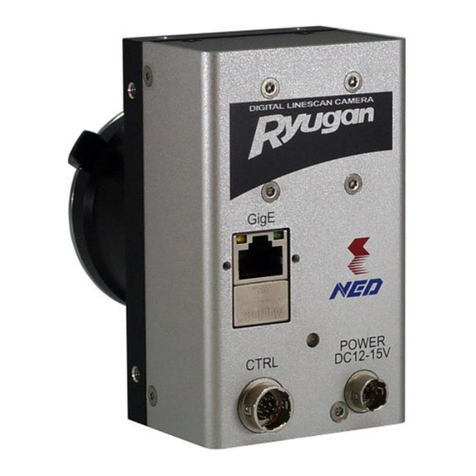
NED
NED RMSL6K17GE User manual

NED
NED XCM40170DLMT2CXP User manual
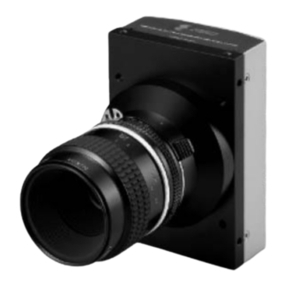
NED
NED XCM6040SAT2 User manual
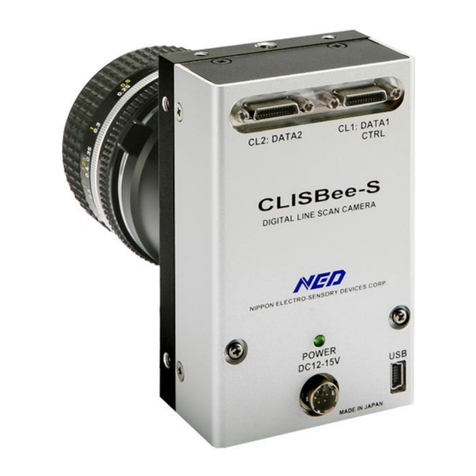
NED
NED CLISBee-S User manual
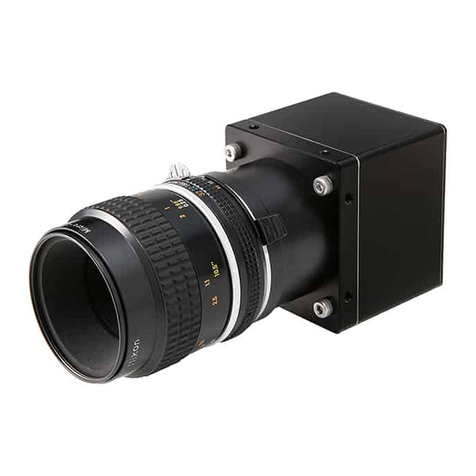
NED
NED SUCL2025T3 User manual
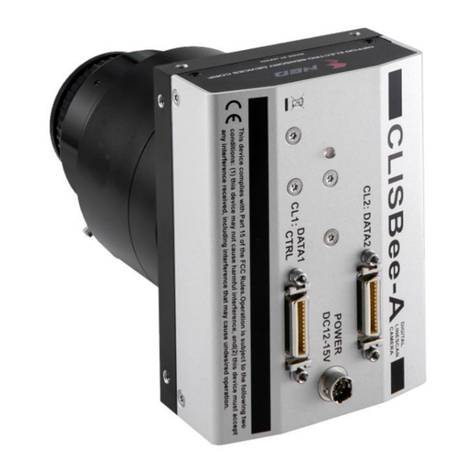
NED
NED XCM8085DLMT8 User manual
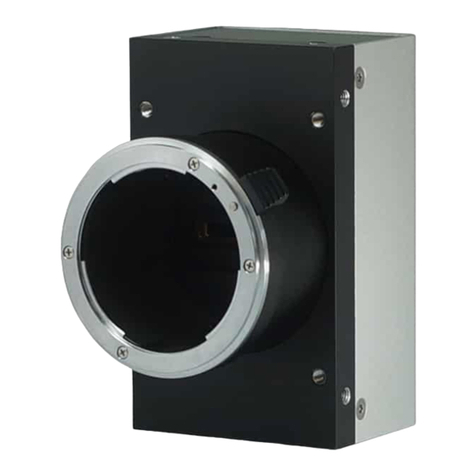
NED
NED RMSL8K39CL User manual
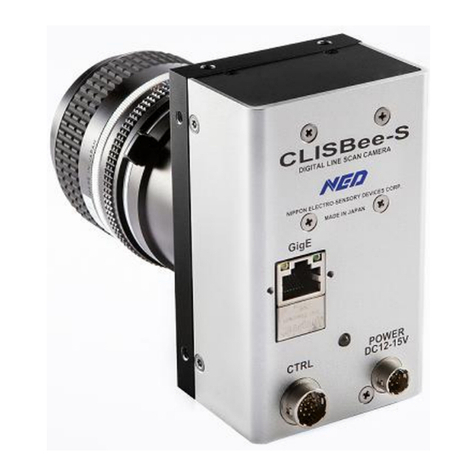
NED
NED XCM20125GIG User manual
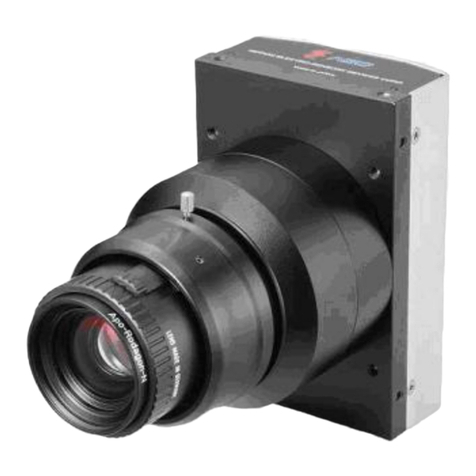
NED
NED Camera Link XCM8040SAT4 User manual
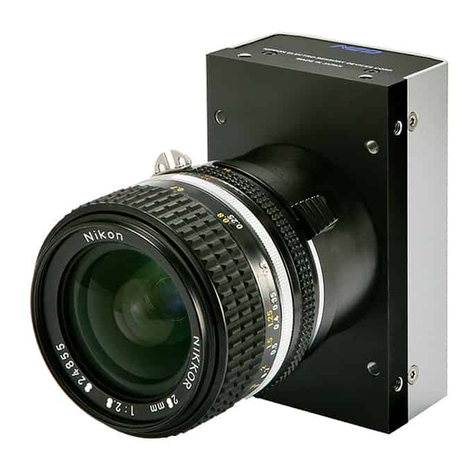
NED
NED XCM4040DLMT4 User manual
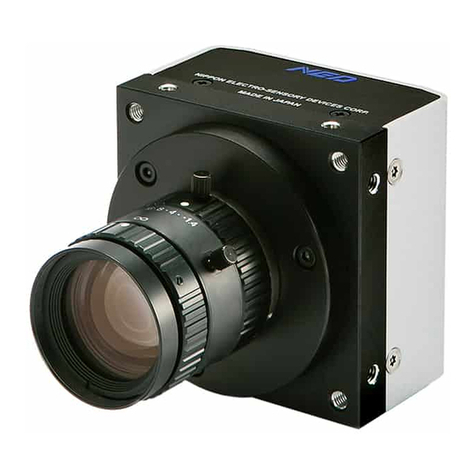
NED
NED XCM2085DLMT2 User manual

NED
NED CoaXpress XCM80160CXP User manual
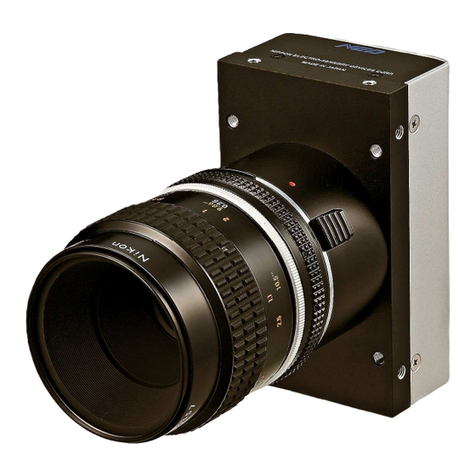
NED
NED XCM20160T2CXP User manual
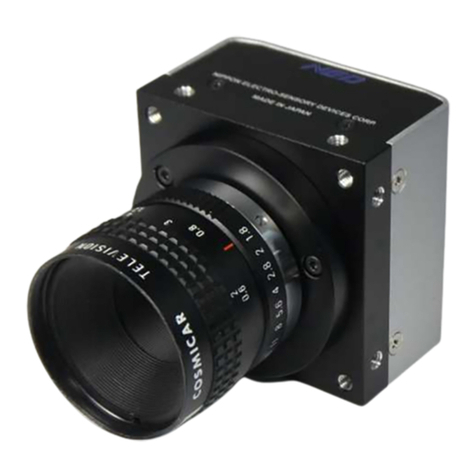
NED
NED XCM2085DLCT3 User manual
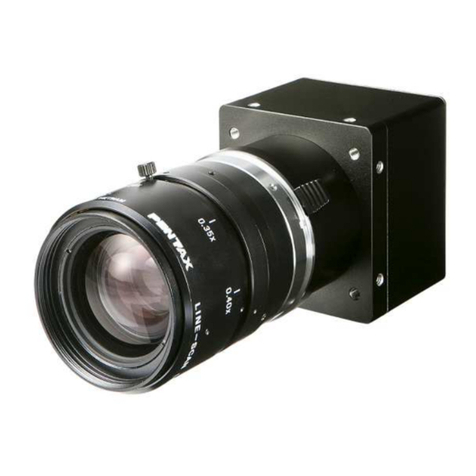
NED
NED SUi7440 User manual
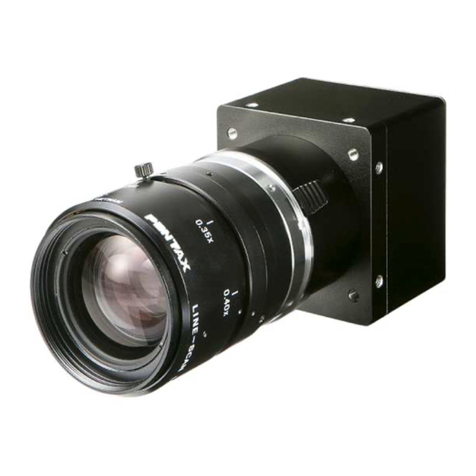
NED
NED SUi7450T2 User manual

NED
NED XCM6040SAT2 User manual
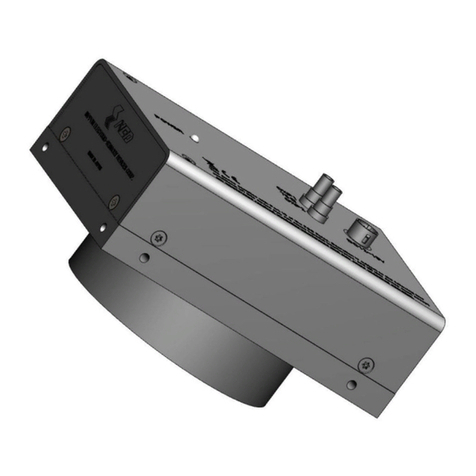
NED
NED RMSL8K76CP User manual
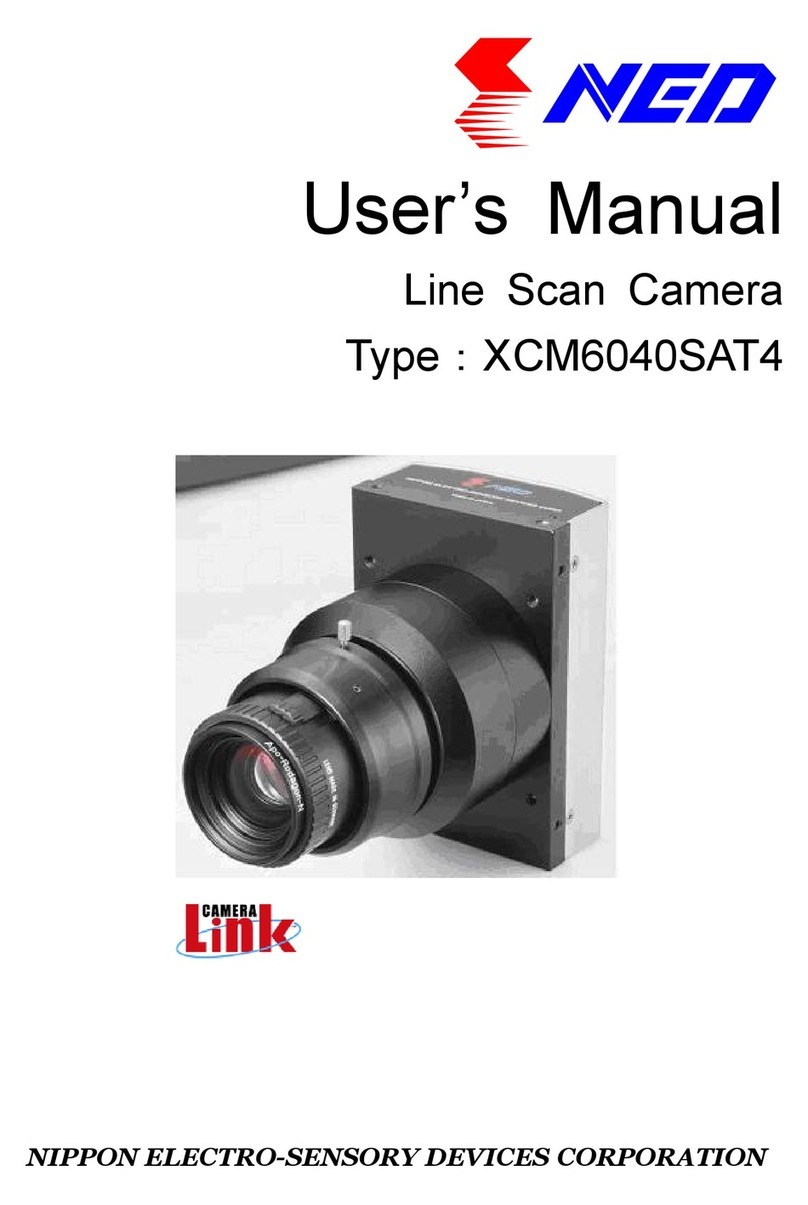
NED
NED XCM6040SAT4 User manual

